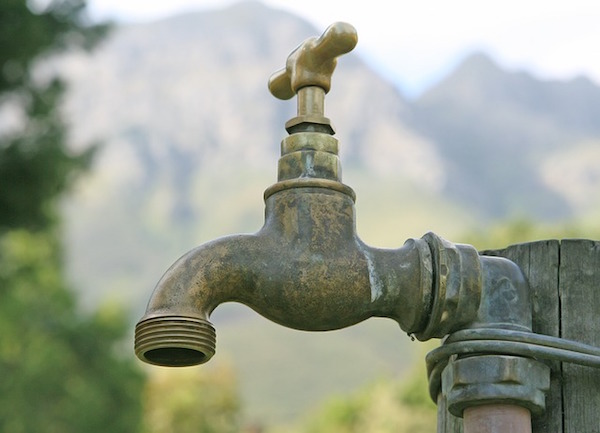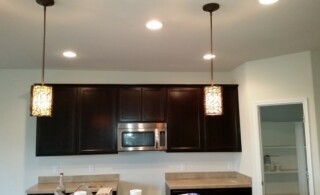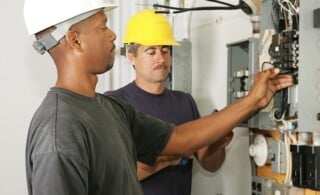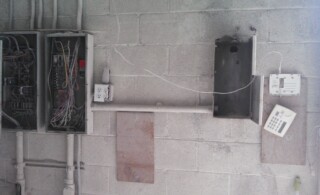
Outdoor electrical outlets are now pretty much a standard feature on any home. Same goes for an outdoor faucet. What doesn’t always come standard are necessary safety features and homeowner common sense. In order to avoid disaster when it comes to your outdoor electrical outlets and your exterior faucets, it is important to educate yourself to the dangers of each to yourself and your home. Also, get to know which precautions you can take to prevent personal injury and home damage before they strike.
Outdoor Electrical Outlets—A Primer
Outdoor outlets are safe for one reason only: the advent of the ground fault circuit interrupter, otherwise known as a GFCI outlet. GFCI’s sever the electrical current when electricity leaks to ground (which in most cases means the electricity is running through you). Because working outside often involves working around pools, hot tubs, puddles and in wet weather, GFCI’s are the difference between you receiving a mild shock and you being served up well done at the next neighborhood barbecue. If you don’t have a GFCI outlet installed for all your outdoor electrical outlets, call in the cavalry to get this done as quickly as possible.
Other Precautions
Besides making sure you’ve got GFCI’s installed on all your outdoor electrical outlets, you might also want to invest in covers that protect outlets from water exposure even when appliances and power tools are plugged in. Furthermore, it’s wise to avoid working outdoors with electrically powered tools and equipment when it’s wet outside. Observing this simple advice will drastically reduce your risk of any electrical related injury.
Tips for an Outdoor Faucet
An outdoor faucet isn’t so much a danger to you as it is to your home. Older faucets can easily freeze with a rapid drop in temperature, busting your pipes and creating a plumbing nightmare in your basement or crawlspace. To avoid this problem, install frost-proof outdoor faucets in your home. These faucets work to protect your pipes from breaking on a number of fronts. First of all, most are fitted with an anti-siphon sill cock that prevents freezing altogether. Furthermore, they usually connect to your home’s plumbing well inside your structure, drastically reducing the chance that any frozen water will expand at a joint, where most pipe damage occurs.
Ready to start your outdoor plumbing?
Find ProsOther Tips
Installing a frost proof faucet is far and away the best protection you can provide your home, but some common sense measures will also help you avoid major plumbing debacles. If a hard frost is predicted in your area, be sure to unhook all hoses before the freeze hits. Hoses can prevent faucets from draining properly, leaving water inside the pipes to do its damage. Also, be sure all faucets are tightly shut and drained before the cold sets in for the same reason.
Contact an Expert
GFCI’s and frost proof faucets are only as good as their installation. If they’re not put in correctly, they’ll only prevent a false sense of security and can be an even greater safety risk to people assuming that both themselves and your home are protected. Talk to a qualified plumber or electrician to make sure your GFCI’s and frost proof faucets are correctly installed. That way you’ll never have to second-guess your own safety, or the integrity of your home.
 Adding a Home Wet Bar
Adding a Home Wet Bar  Upgrade Your Home Life
Upgrade Your Home Life  Powerful Electrical Upgrades
Powerful Electrical Upgrades  Tips for Finding & Hiring an Electrician
Tips for Finding & Hiring an Electrician  Electrical Box Regulations – Is There a Fire Hazard in Your Walls?
Electrical Box Regulations – Is There a Fire Hazard in Your Walls? 

Are You Familiar With This Topic? Share Your Experience.